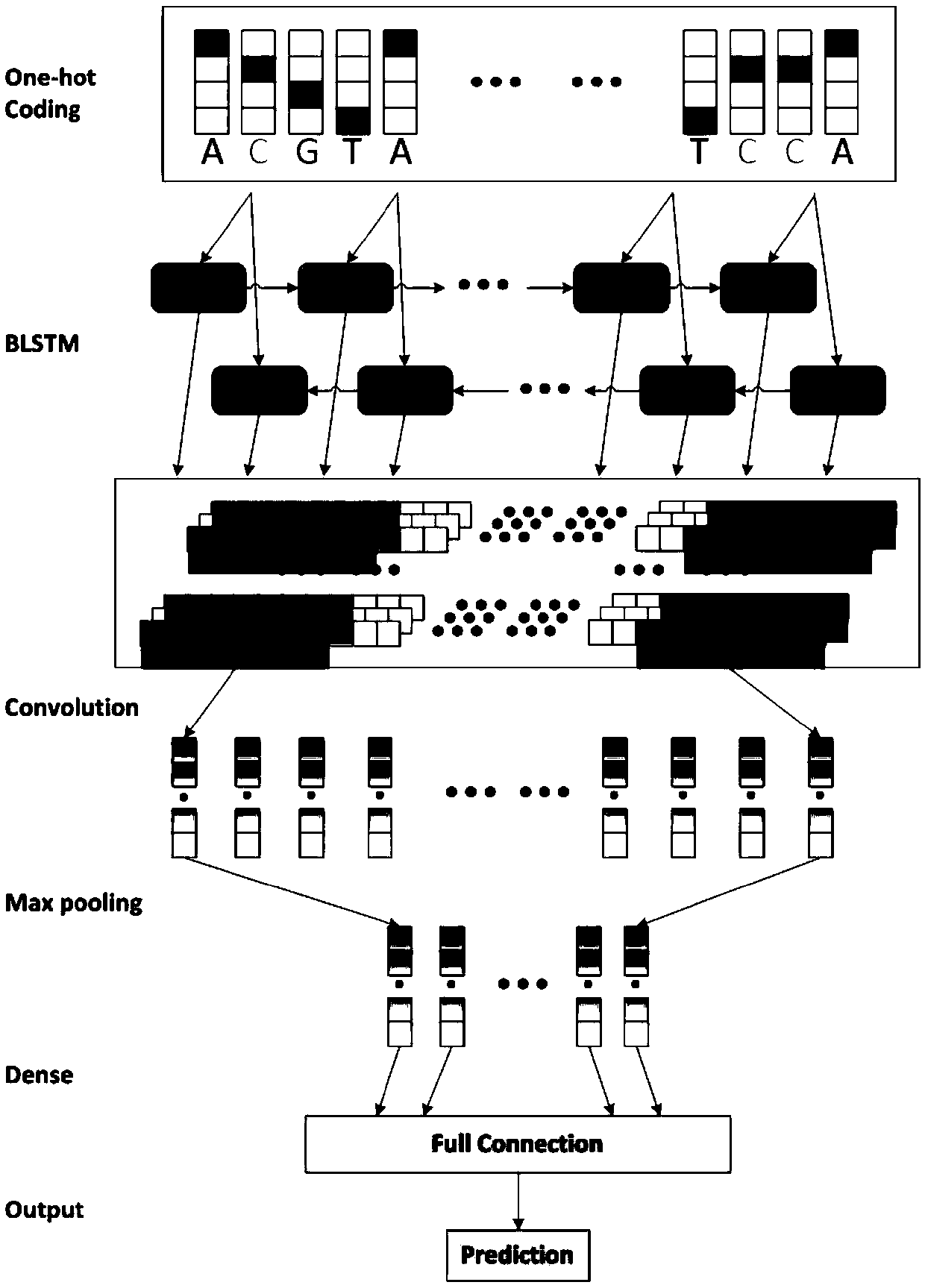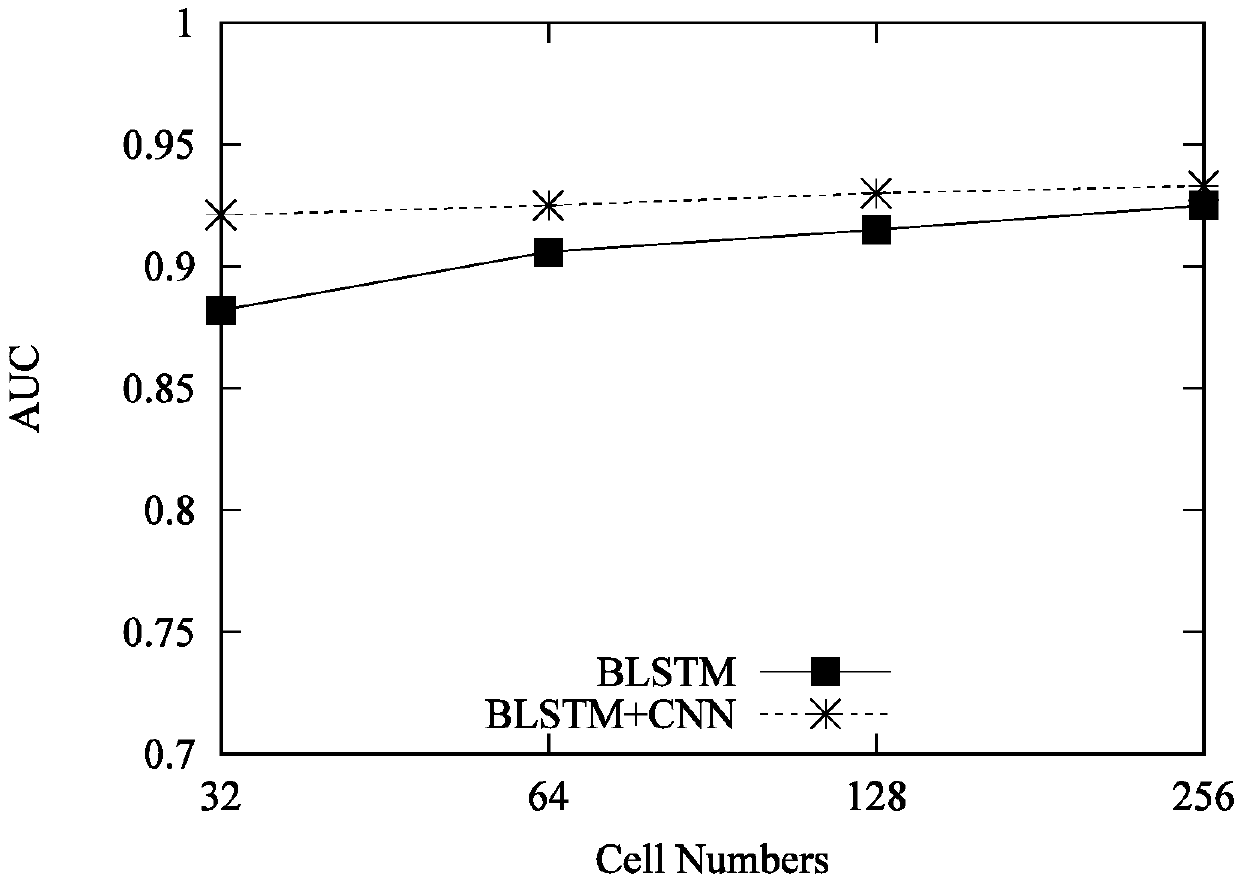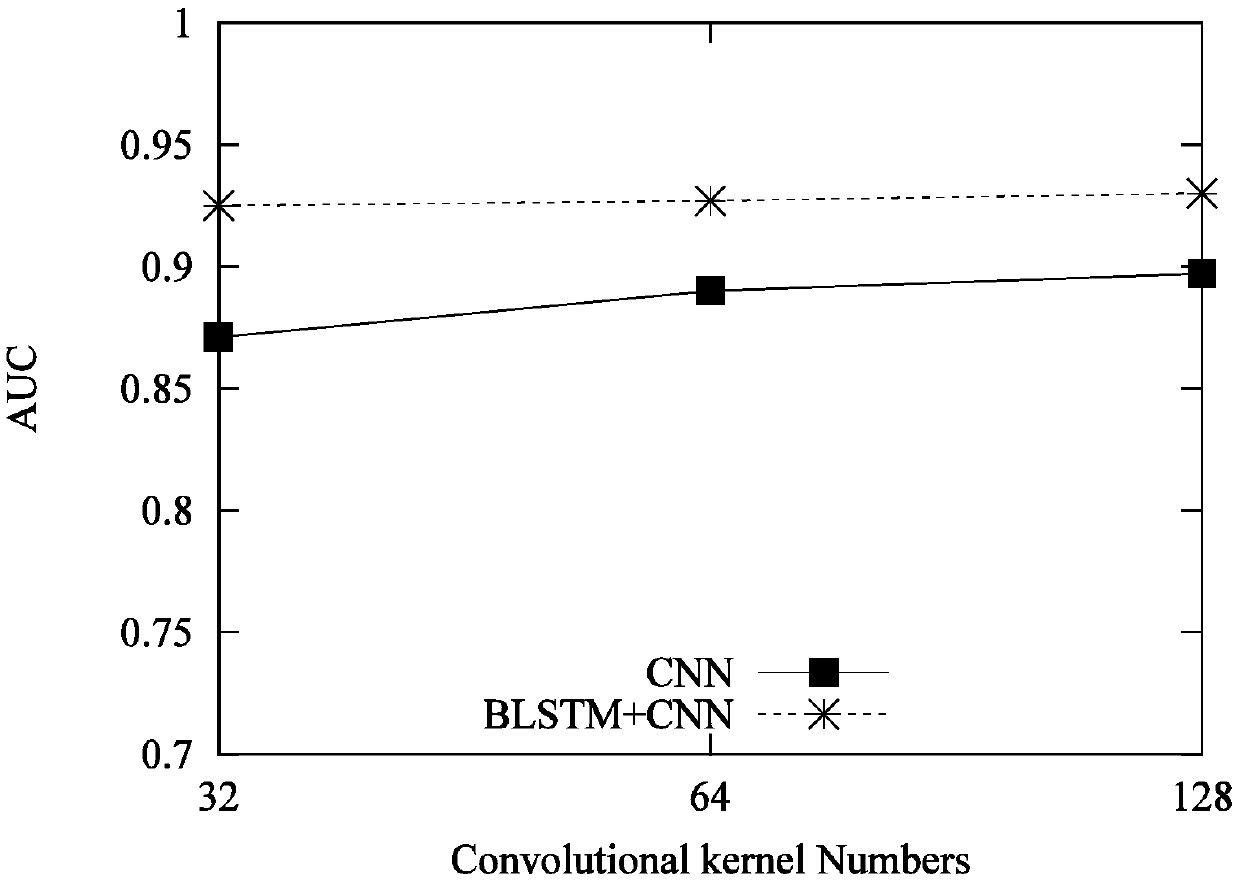Bidirectional LSTM and CNN model for predicting DNA-protein binding
A protein and model technology, applied in the field of deep learning and bioinformatics, can solve the problems affecting the performance of the model system, capture the position and dynamic performance of the probe sequence, and predict the accuracy of DNA-protein binding to be improved, etc., to achieve high accuracy , the effect of good prediction effect
- Summary
- Abstract
- Description
- Claims
- Application Information
AI Technical Summary
Problems solved by technology
Method used
Image
Examples
Embodiment Construction
[0024] In order to make the objectives, technical solutions, and advantages of the present invention clearer, the present invention will be further described in detail below in conjunction with specific embodiments and with reference to the accompanying drawings. It should be understood that these descriptions are only exemplary and not intended to limit the scope of the present invention. In addition, in the following description, descriptions of well-known structures and technologies are omitted to avoid unnecessarily obscuring the concept of the present invention.
[0025] The invention uses a two-way LSTM structure to process the order and reverse order dependent information in the DNA sequence. The network structure and the proposed algorithm are implemented based on the Keras library. All of this is done on the graphics processing unit (GPU) to speed up training time.
[0026] Such as figure 1 As shown, the BLSTM network and the CNN network are combined to form the BLSTM+CN...
PUM
 Login to View More
Login to View More Abstract
Description
Claims
Application Information
 Login to View More
Login to View More - R&D
- Intellectual Property
- Life Sciences
- Materials
- Tech Scout
- Unparalleled Data Quality
- Higher Quality Content
- 60% Fewer Hallucinations
Browse by: Latest US Patents, China's latest patents, Technical Efficacy Thesaurus, Application Domain, Technology Topic, Popular Technical Reports.
© 2025 PatSnap. All rights reserved.Legal|Privacy policy|Modern Slavery Act Transparency Statement|Sitemap|About US| Contact US: help@patsnap.com



